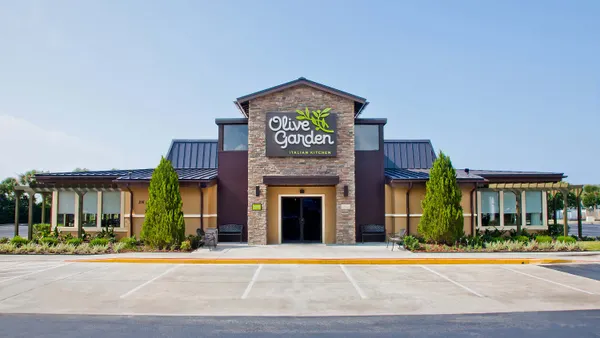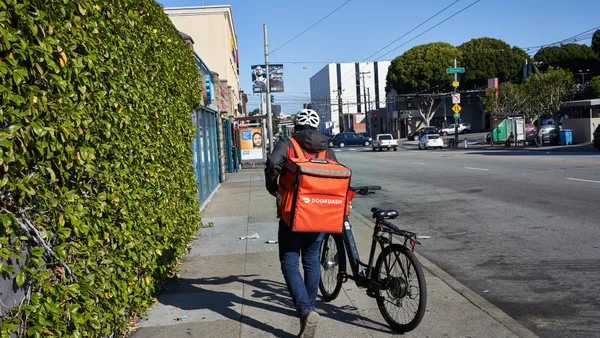The following is a guest post by Peter Dougherty, general manager of hospitality at Lightspeed.
This time last year, the hospitality business in the U.S., and the future of hospitality in general, seemed uncertain. Fortunately, things have changed. The hospitality industry is re-emerging to serve Americans who are excited to be back at their favorite restaurants, coffee shops and bars. But we're not out of the woods, yet, and in an uncertain time, it's always helped me to look at the data. The good news is, on the other side of the world, Lightspeed's customers in Australia can teach us a thing or two about how the hospitality industry might fare in the coming months.
Technology changed how restaurants coped with COVID-19
In Australia, Lightspeed restaurants are seeing reservations and prepayments become the norm, and a renewed sense of respect for the hospitality industry after 2020 highlighted just how much the people of Australia took these experiences for granted. Set menus and sittings have become increasingly popular, allowing venues to more efficiently manage service and waste.
We're also seeing hospitality venues implementing processes, systems and technologies that allow them to adapt to sudden lockdowns and restrictions, but also meet and exceed the expectations of the post-pandemic customer. Adoption of QR technology that allows patrons to order-at-table has grown significantly: There are now more than eight times the number of venues using this technology (May 2021) as there were last year (May 2020). What initially stemmed from COVID-19 compliance has now become an integral part of the new consumer experience, and hospitality operators are reaping the benefits. Orders placed through digital channels show an average increase of 22% in transaction value when compared to traditional orders paid by card, since QR code mobile ordering allows patrons to snag an extra round or appetizer without waiting for their server to return and collect their order. QR code adoption grew in the U.S. as well: An industry report conducted by the National Restaurant Association noted that half of full-service operators have added digital menus accessed by scanning a QR code since March 2020.
For most consumers, scanning QR codes to check in, order and pay has quickly become second nature. While COVID-19 has been the biggest challenge the industry has faced in decades, it's also brought about a significant acceleration in the adoption of technologies that will allow hospitality operators to run more efficiently, future-proof their businesses and shift their focus back to what motivates the majority of restaurants: building connections with their customers and creating beautiful experiences.
Major cities may no longer be culinary meccas
Generally, cities were more significantly impacted than regional Australia due to localized lockdowns, and central business districts were hit harder than surrounding suburbs as people adapted to working remotely and spending their discretionary income closer to home. Data from Roy Morgan shows that as of the end of May, Melbourne's business district foot traffic had plunged to below 20% of pre-pandemic levels, while Sydney's was sitting on 38% and Brisbane had about half of it's pre-pandemic foot traffic. In the U.S. we are already starting to see trends of prominent restaurant groups, restaurateurs and chefs looking to the suburbs and beyond for new culinary operations. According to the The Wall Street Journal, up to 25% of the 160-million-strong U.S. labor force "is expected to stay fully remote in the long term," changing the foot traffic of major cities.
Despite being hardest hit, bars are bouncing back
In Australia, bars found it harder to adapt to takeaway and delivery channels and had a bigger deficit to rebound from, so their year-on-year growth has been more significant. It's fantastic to see the whole industry enjoying a revival, with venues riding the wave of post-lockdown excitement, as Australians rediscover their communities and reconnect with friends and family over a drink. In May, Sydney bars enjoyed four times more business than the same month last year, and Melbourne bars had 10 times more business during that period. The loosening of state governments' legislation around the service of takeaway alcohol and outdoor dining limits have been catalysts for this revival, and we hope these changes are permanent.
Within a year, revenue growth exceeds pre-pandemic
April 2020 was the worst month for the Australian hospitality industry, much like the rest of the world, as venues lost close to half of their monthly revenue (-47%) almost overnight due to lockdowns. While all states have since experienced sustained or short-term lockdowns, May 2021 saw average revenues across the country's bars, cafes and restaurants exceed pre-pandemic levels, highlighting the extent of the industry's recovery.
Lightspeed merchant Trevor Simmons co-owns CBD cafes in Brisbane and Melbourne. Industry Beans' revenue was up 60% from last May when the first lockdowns hit, Simmons told the Sydney Morning Herald, adding that his revenue is now up 85%-90% from pre-COVID-19 numbers. He plans for that to increase in the coming months. In Australia, hospitality merchants are seeing an increase in transactions despite challenges in the hospitality sector. We expect positive trends to continue in Europe and in North America, as well.

















